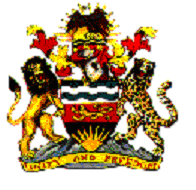

Ministry of Economic Planning and Development
P.O Box 30136, Lilongwe 3 Malawi
Tel. (265) 01 788 888
Fax: (265) 01 788 247
E-mail: epd@malawi.net


Ministry of Economic Planning and Development |
FOREWORD
This Malawi Economic Growth Strategy reflects a joint realisation by Government and the private sector that the economy has been registering low or negative growth and that something has to be done in order to reverse the trend. The rationale for growth and diversification for Malawi is compelling because rapid broad-based growth is necessary to reduce poverty. Rapid broad-based growth will expand the sectoral sources of growth, deepen and sustain the gains to be made from smallholder agriculture in leading growth and poverty reduction, and make the economy less susceptible to external shocks like weather, changes in terms of trade, political developments in the region, and fluctuations in external aid flows. However, existence of low per capita income and high inequality implies that high future economic growth should be complemented by equity policies.
In April 2002, Malawi launched the Malawi Poverty Reduction Strategy Paper (MPRSP) that aims at meaningfully reducing poverty by empowering the poor. The MPRSP is built around four strategic pillars, the first of which emphasises the promotion of sustainable pro-poor growth. However, many stakeholders, including the private sector, have observed that policies to fulfil this strategic objective are insufficient to achieve the sustained annual economic growth of at least 6 per cent per annum required to reduce poverty by half by the year 2015.
In view of the foregoing, the Ministry of Economic Planning and Development (MEPD) set up a Task Force to formulate a Malawi Economic Growth Strategy in close cooperation with the private sector. Political will and leadership are critical to the success of this Strategy because it will ensure that the right macroeconomic conditions and legal and regulatory environment exist within which economic growth, investment and trade can take place. Government has a central role in setting policies and channelling resources to ensure a conducive macro-environment.
The Malawi Economic Growth Strategy has been based on a realistic assessment of the resources available. It focuses on strategies and actions that do not require substantial additional spending by Government, but can be achieved through refocusing existing resources and by developing a more conducive set of policies that will stimulate the private sector investment and trade in the immediate future. However, in the medium term, donor organisations will have a key role to play in creating the conducive environment for economic growth by supporting policy reforms and providing resources to support government during the transitional period.
David Faiti., M.P
MINISTER OF ECONOMIC PLANNING
AND DEVELOPMENT
TABLE OF CONTENTS: (full main report is available here, (pdf ~ 910kB))
Foreword i
Acknowledgements ii
Acronyms iii
Definitions iv
About This Report viii
Chapter One: Overview of the Economy 1
1.1 Introduction 1
1.2 Structure of the Economy 1
1.3 Recent Economic Developments 2
1.4 Prospects for Growth 5
Chapter Two: Cross-Cutting Constraints 9
2.1 Introduction 9
2.2 Poor Macroeconomic Conditions 10
2.3 Inefficient Tax and Incentive System 10
2.4 Poor Infrastructure 10
2.5 Poor Private and Public Co-operation and Dialogue 10
2.6 Weaknesses in the Human Resource Base 11
2.7 Strategies 11
Chapter Three: Framework 14
3.1 Introduction 14
3.2 Need for Political Will 15
3.3 Stable Macroeconomic Policies 15
3.4 Trade 16
3.5 Domestic Supply of Internationally Competitive Goods and Services 16
3.6 External Environment 17
3.7 Clearly Defined Role of Government 18
3.8 Favourable Climate for Private Enterprises 18
3.9 Quality of Public Institutions 18
3.10 Skilled Human Resources 19
3.11 Economic Empowerment Programme 19
3.12 Resource Considerations 19
Chapter Four: Trade Strategy 20
4.1 Overview 20
4.2 Major Constraints Affecting Growth of Trade 20
4.3 Proposed Strategy to Stimulate Trade 21
Chapter Five: The Agriculture Sector 23
5.1 Overview 23
5.2 Agriculture and Irrigation Strategy 23
5.3 Priority Agricultural Sub-sectors and Strategy 25
Chapter Six: The Tobacco Sector 27
6.1 Introduction 27
6.2 Performance 27
6.3 Threats 28
6.4 Strategies 30
6.5 Implementation 31
Chapter Seven: The Tea Sector 32
7.1 Introduction 32
7.2 Current Performance 32
7.3 Marketing 33
7.4 Investment in Replanting, Factories and Irrigation 34
7.5 Smallholder Tea Growers 36
7.6 Smallholder Growing Costs 37
7.7 Constraints 38
7.8 Strategies and Actions 39
7.9 Implementation Process 42
Chapter Eight: The Sugar Sector 43
8.1 Introduction 43
8.2 Future Prospects 44
8.3 Global Competitiveness 44
8.4 Constraints 45
8.5 Strategies 45
8.6 Implementation 46
Chapter Nine: The Cotton Sector 47
9.1 Introduction 47
9.2 Cotton Production in Malawi 47
9.3 Pre-treated Seeds 49
9.4 Marketing 50
9.5 Cottonseed 51
9.6 Biotechnology in Cotton 52
9.7 The World Cotton Market 52
9.8 Linkages between Textiles and Garment Industry 55
9.9 Cotton Council 55
9.10 Constraints 56
9.11 Strategies 56
9.12 Implementation 58
Chapter Ten: The Mining Sector 59
10.1 Introduction 59
10.2 Potential Demand for Mineral Products 60
10.3 Production of Minerals 61
10.4 Constraints 64
10.5 Strategies 64
10.6 Implementation 66
Chapter Eleven: The Manufacturing Sector 68
11.1 Introduction 68
11.2 Policy Background 68
11.3 Structure of the Sector and Implications 69
11.4 Opportunities and Constraints 71
Chapter Twelve: Textiles and Garments 73
12.1 Introduction 73
12.2 Textiles Analysis 73
12.3 Garments/Apparel Analysis 74
12.4 Trade Agreements 74
12.5 Transportation 76
12.6 Constraints 76
12.7 Strategies 78
12.8 Implementation 79
Chapter Thirteen: The Agro-processing Sub-sector 80
13.1 Introduction 80
13.2 Canning And Preserving Fruit and Vegetables 80
13.3 Rice Processing 81
13.4 Cassava 82
13.5 Macadamia and Other Tree Nut Processing 83
13.6 Other Potential Food Processing Investment Areas 83
13.7 Constraints 83
13.8 Strategies 84
13.9 Implementation 85
ChapterFourteen: The Tourism Sub-sector 86
14.1 Introduction 86
14.2 Performance 86
14.3 Constraints 88
14.4 Strategies 89
14.5 Implementation 92
Chapter Fifteen: Refocusing of Public Sector Institutions 94
15.1 Introduction 94
15.2 Support Organisations 94
15.3 Regulatory/Enforcement Agencies 95
15.4 Development Finance Institutions 95
15.5 The Public Sector Investment Programme 96
Chapter Sixteen: The Private Sector Investment Strategy 97
16.1 Current Situation 97
16.2 Private Sector Investment Constraints 97
16.3 Investment Promotion Strategy 98
Chapter Seventeen: Implementation 100
Appendix 1: Draft Investment Incentives 103
REFERENCES 108
Hosted @ Malawi SDNP website.